What are the ingredients that make up a great playground design? Playgorunds can come in many shapes in forms, from a wild landscape to a miniature city. But what them really great is their ability to harmoniously blend functionality, aesthetics, and sustainability. Designers and studios in this round-up create unique spaces for children that encourage them to discover and immerse them in the joy of outdoor play and exploration.
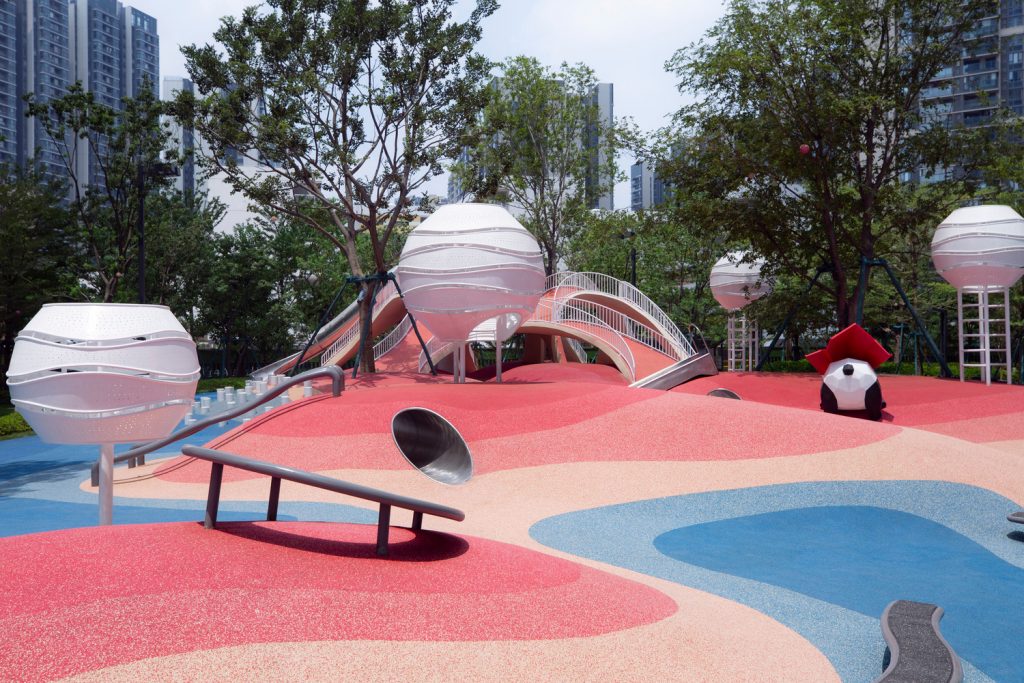
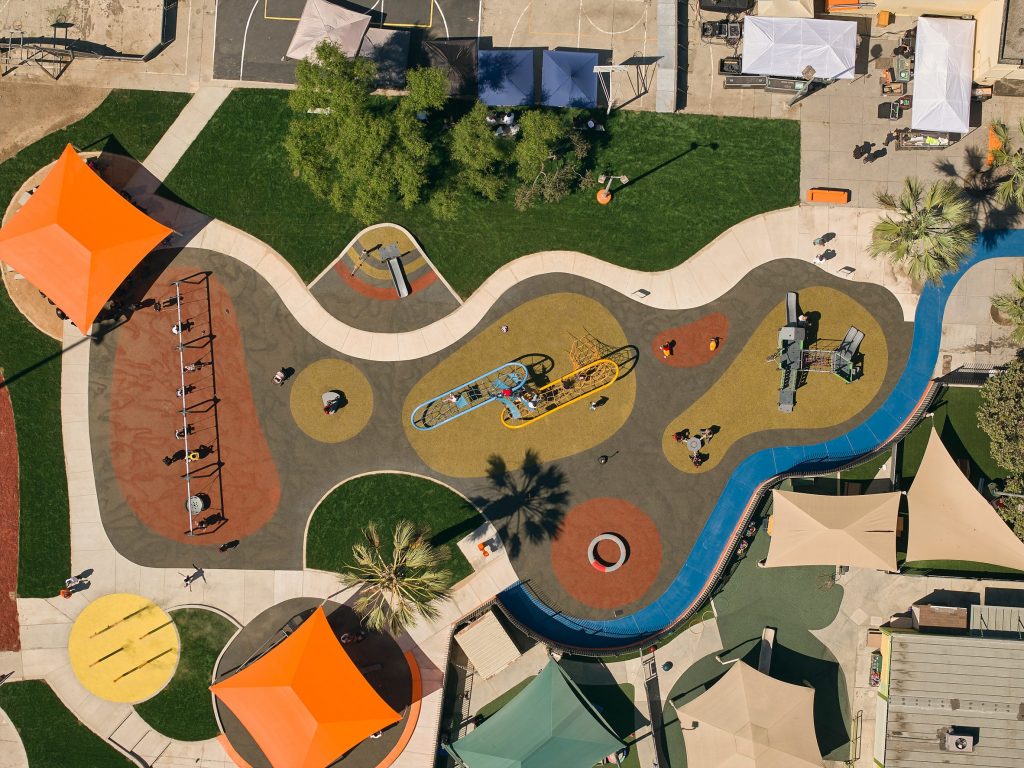
Nickerson playground by NBBJ and Flea
American architecture studio NBBJ has collaborated with the bassist in the American rock band the Red Hot Chili Peppers Flea to design a pro bono playground on a public housing complex in Los Angeles. The team wanted to provide the historically undeserved community with a recreational space that can bring joy, fun, and entertainment to families throughout the year.
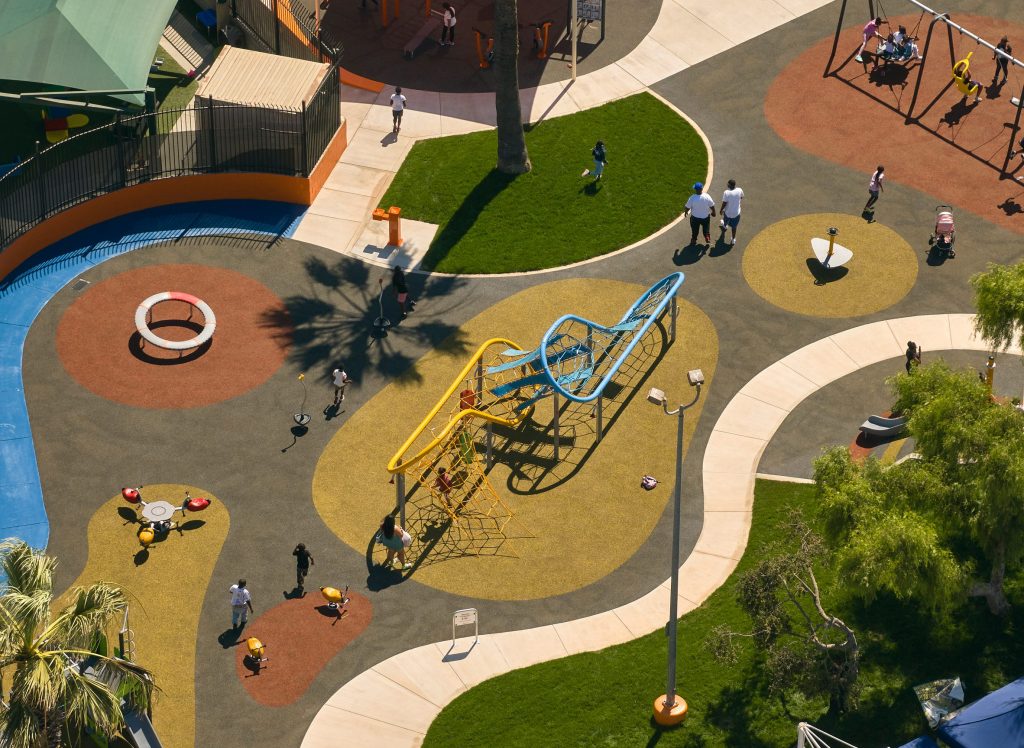
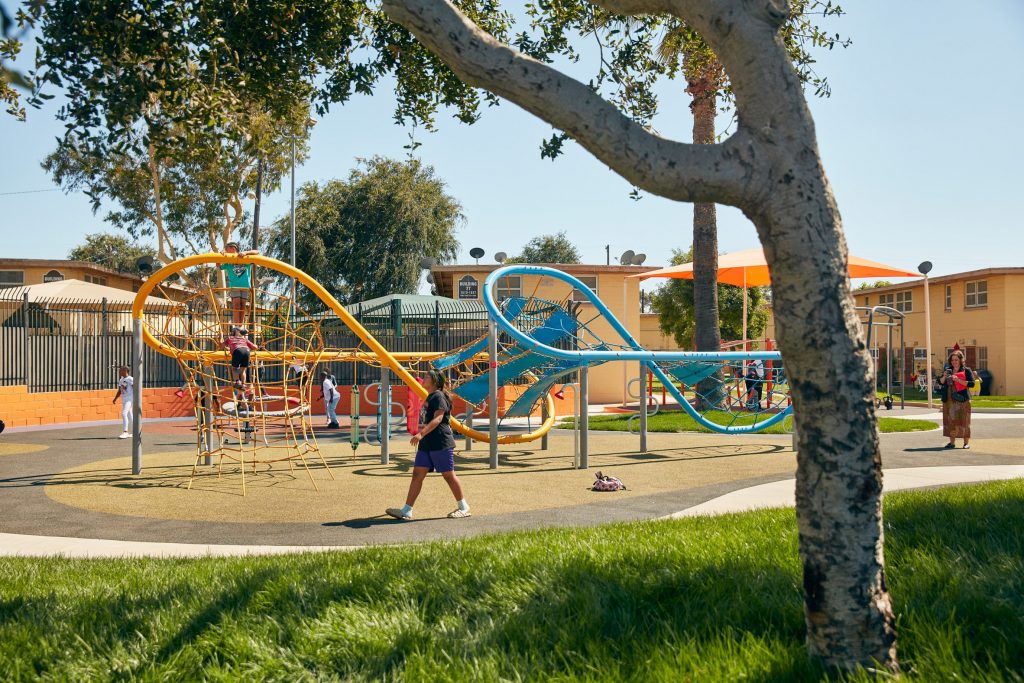
Nickerson playground by NBBJ and Flea
The choice for the project came from Flea’s engagement with the community during the Covid-19 pandemic, when he volunteered there. The project included the renovation of 1,640 square metres of playground space. The architects created slides, swings and a carousel for the community’s children and added misting poles and shade structures much-desired during the high summer temperatures southern California is known for.
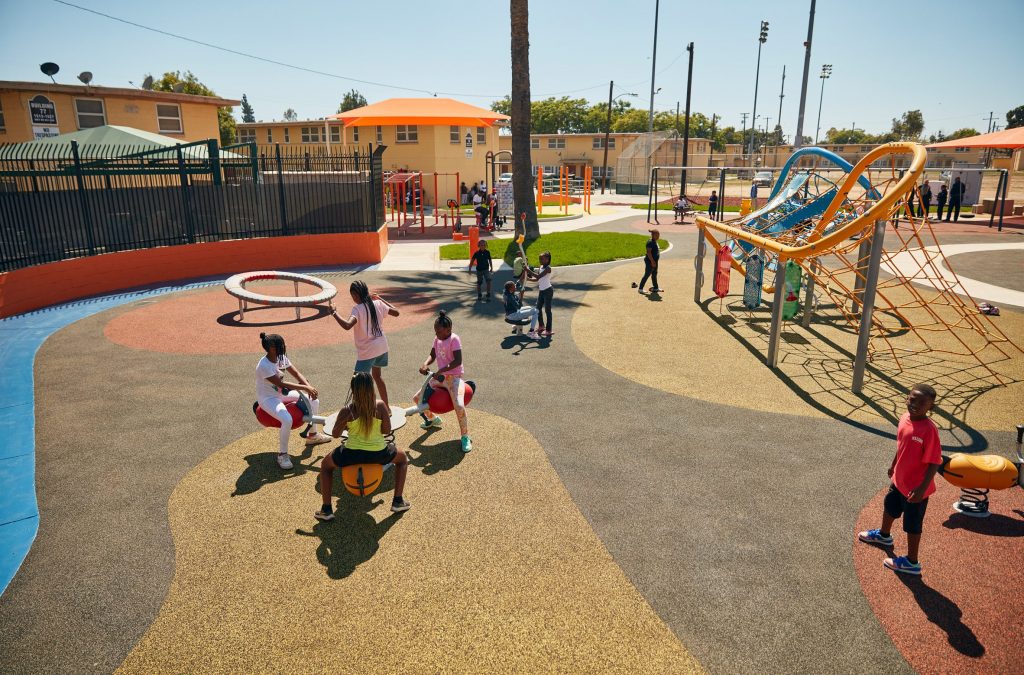
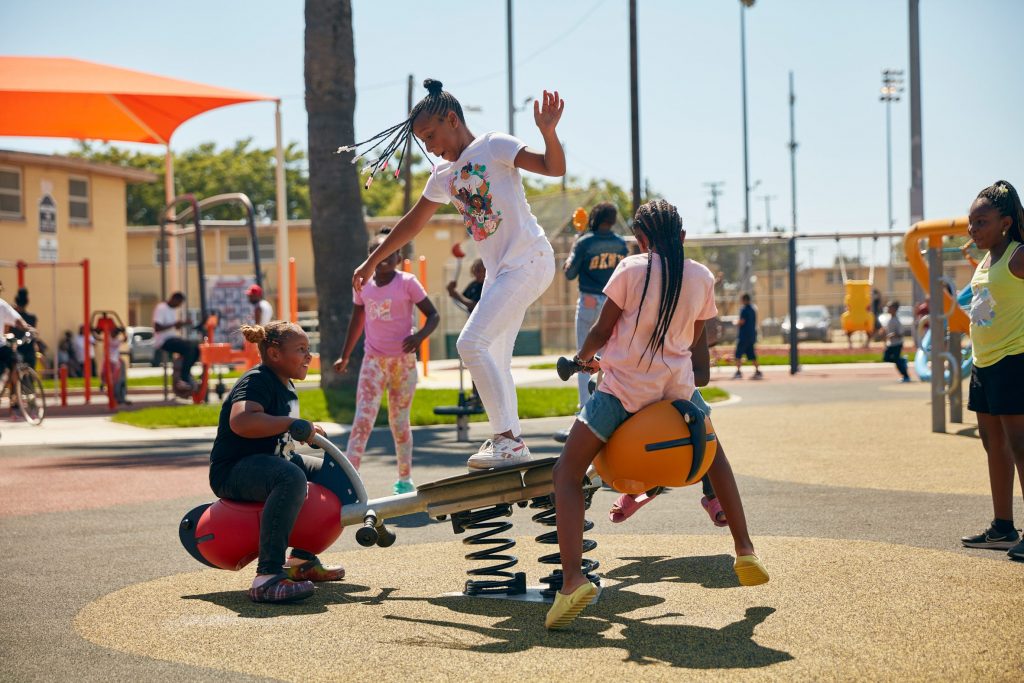
Nickerson playground by NBBJ and Flea
The team opted for recycled material for the play-specific surfaces in the activity areas because it is easy to clean and repair. The material was painted fade-resistant shades of orange and yellow to resist LA’s bright sun. Because of the high summer temperatures during the summer in southern California, the team included misting poles and shade structures.
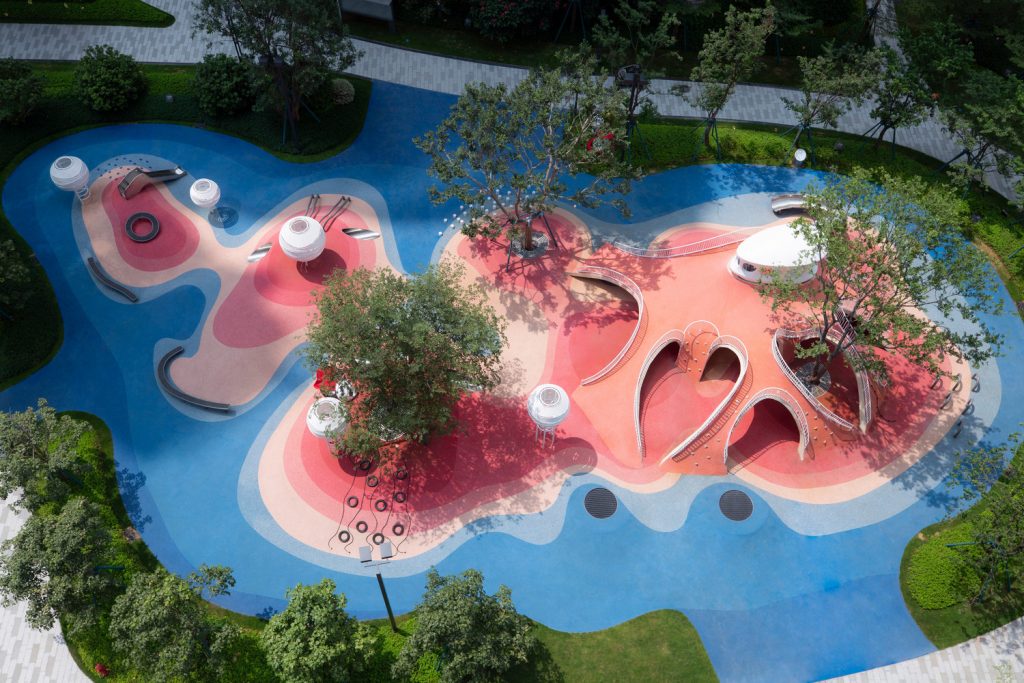
Red Dunes by XISUI Design (also header image)
As its name suggests, the innovative design of the Red Dunes playground by local studio XISUI Design in a residential area in Guangzhou, China, showcases undulating red dunes that create an alluring landscape for children’s activities. By seamlessly integrating functional installations within the natural topography, the project evokes the charm of a mountain nest or a jungle treehouse.
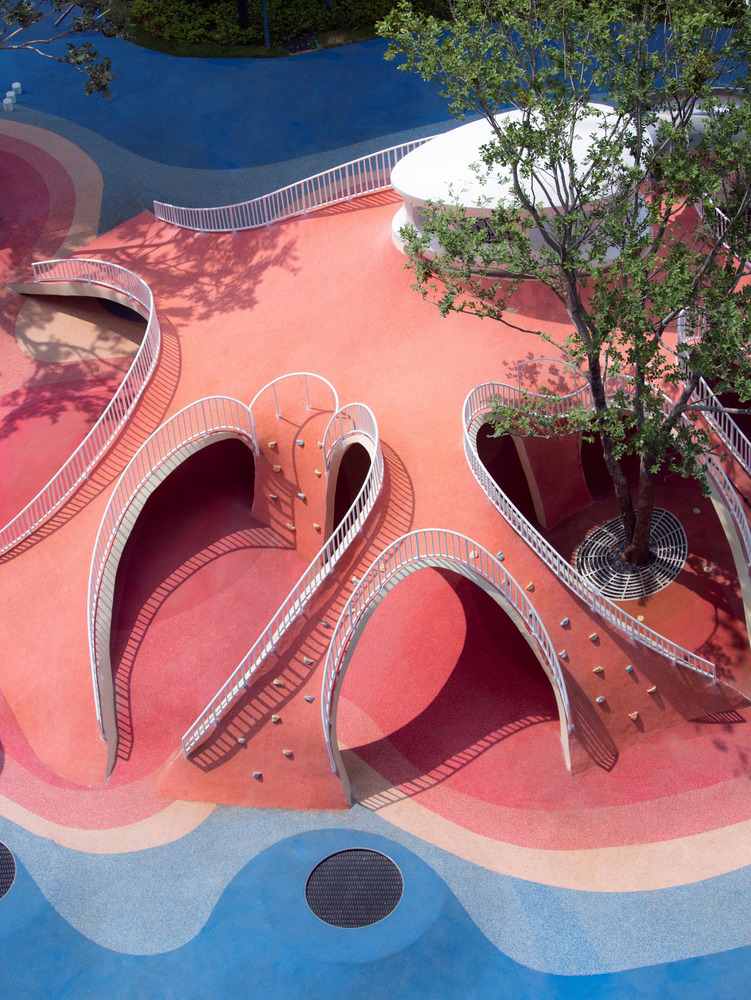
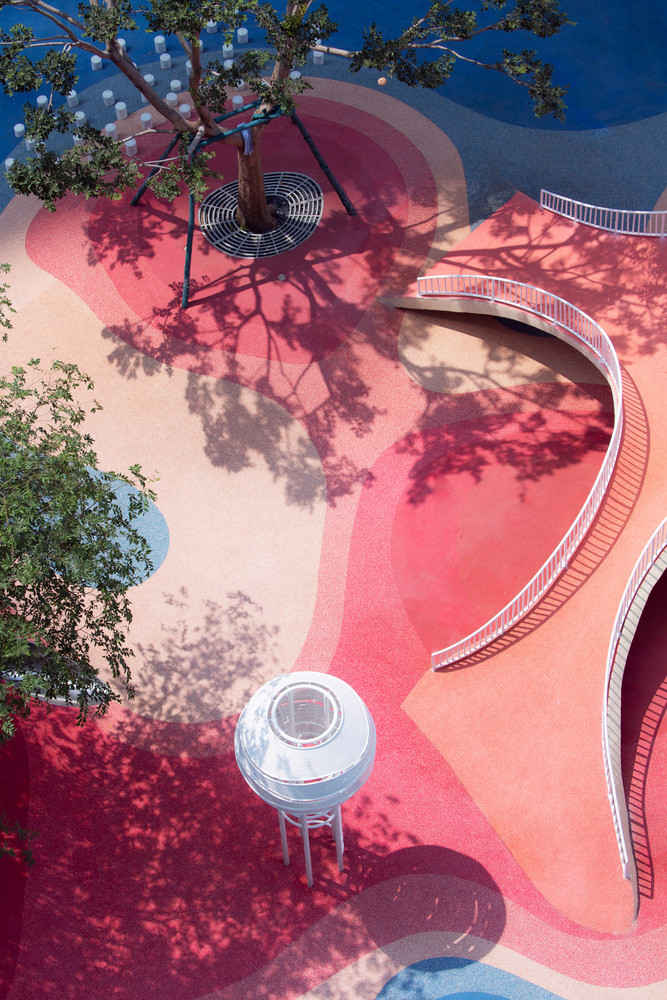
Red Dunes by XISUI Design
Built above an underground parking unit, the play area takes cues from natural forms including mountains and caves and comprises a playful arrangement of hills and arches designed for climbing and discovery.
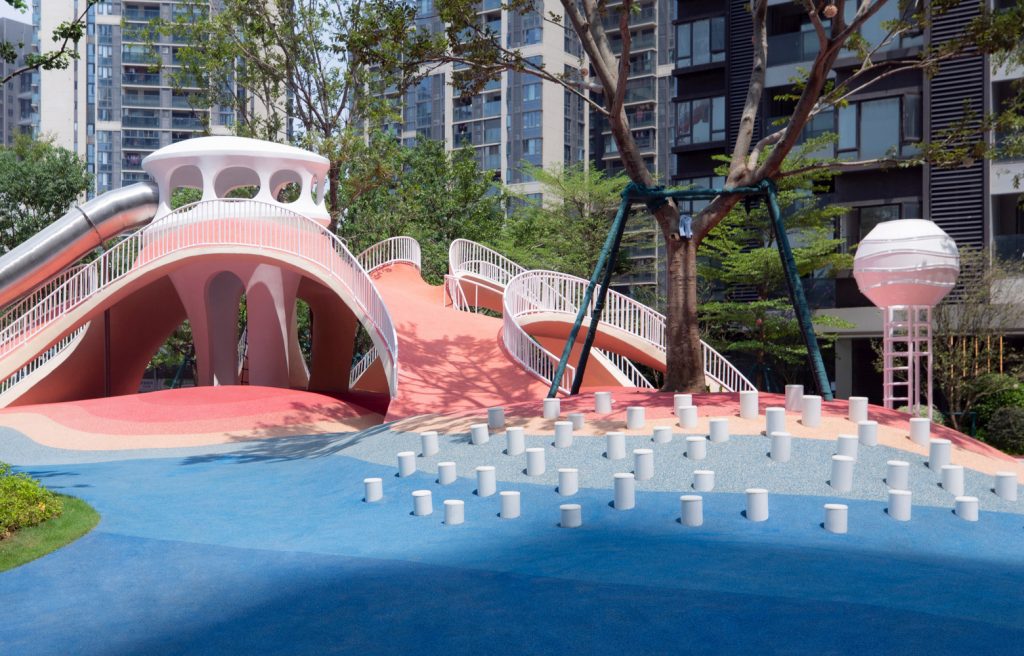
Red Dunes by XISUI Design
The project presents a unique challenge in terms of form and structure with its undulated concrete shell structure. It emulates the cave-like topography of the natural landscape, providing climbing spaces above, and sheltered areas below. Inspired by the load transfer mechanism of natural arches, the design enables large spans and ultra-thin structural thicknesses.
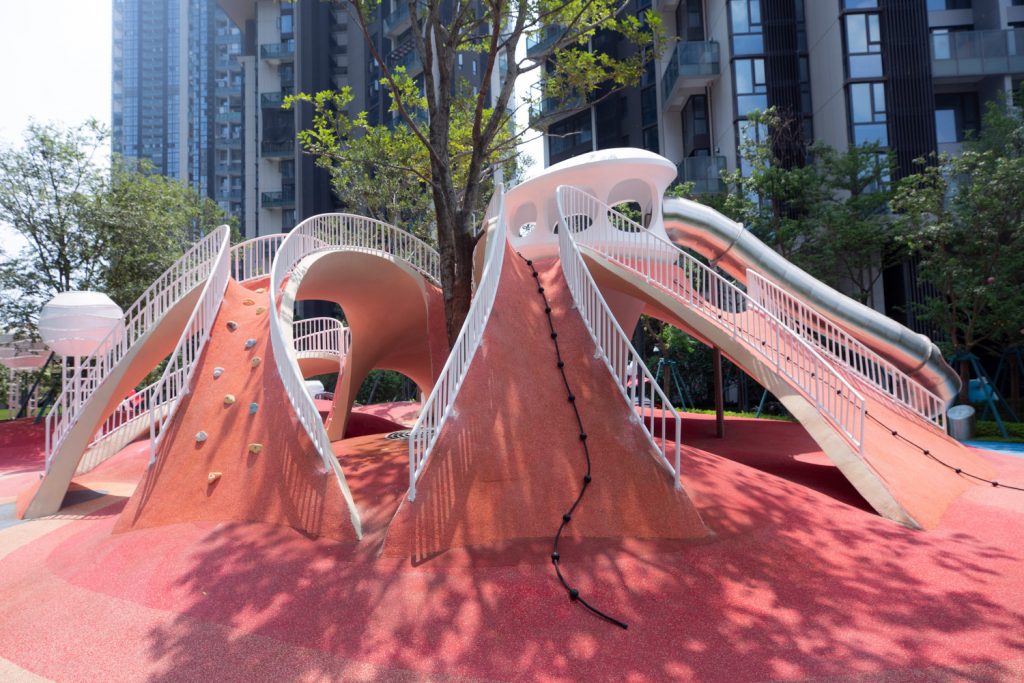
Red Dunes by XISUI Design
This solution allows to enhance the visual cohesion of the artificial structure, reduces column presence, and optimizes spatial efficiency. Besides, it has ensured material savings in comparison to conventional beam-column structures, with approximately two-thirds reduction in raw material usage for the same span.
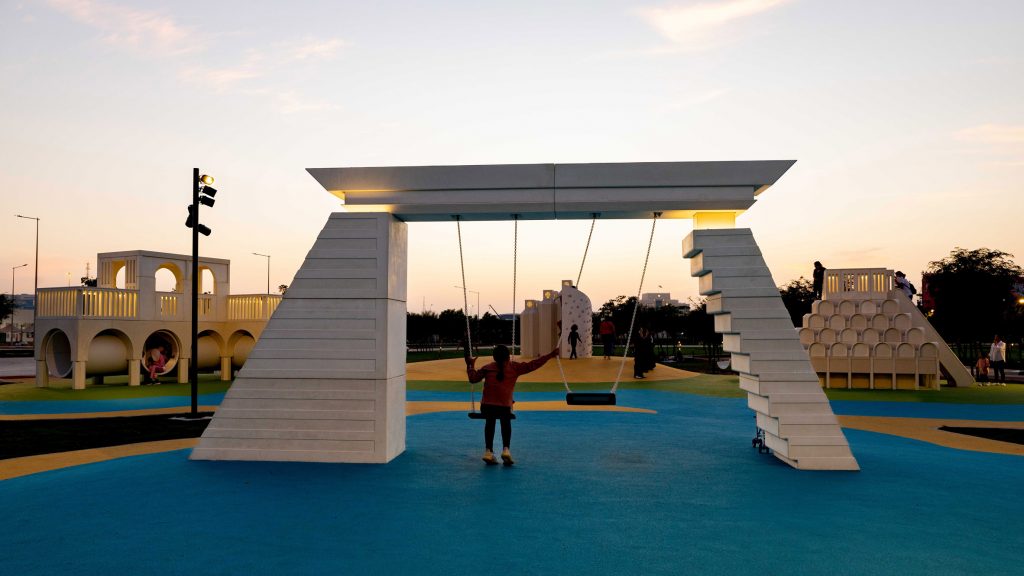
Doha Modern Playground by Shezad Dawood
Artist Shezad Dawood has created an architectural playground in Doha that features miniature versions of four well-known buildings in the city. Located in Doha’s Al Masrah Park, Doha Modern Playground has been created in close collaboration with local architect and architectural historian Fatma Al Sahlawi who helped to choose modernist buildings that best represent “the shift to an independent nation.” In the design of the playground one can find cues of the Sheraton Hotel by William Pereira, the National Theatre and Ministry of Information by Triad CICO, Qatar University by Kamal El Kafrawi and the Qatar Post Office by Twist & Whitley, all of which were built between 1982 and 1987.
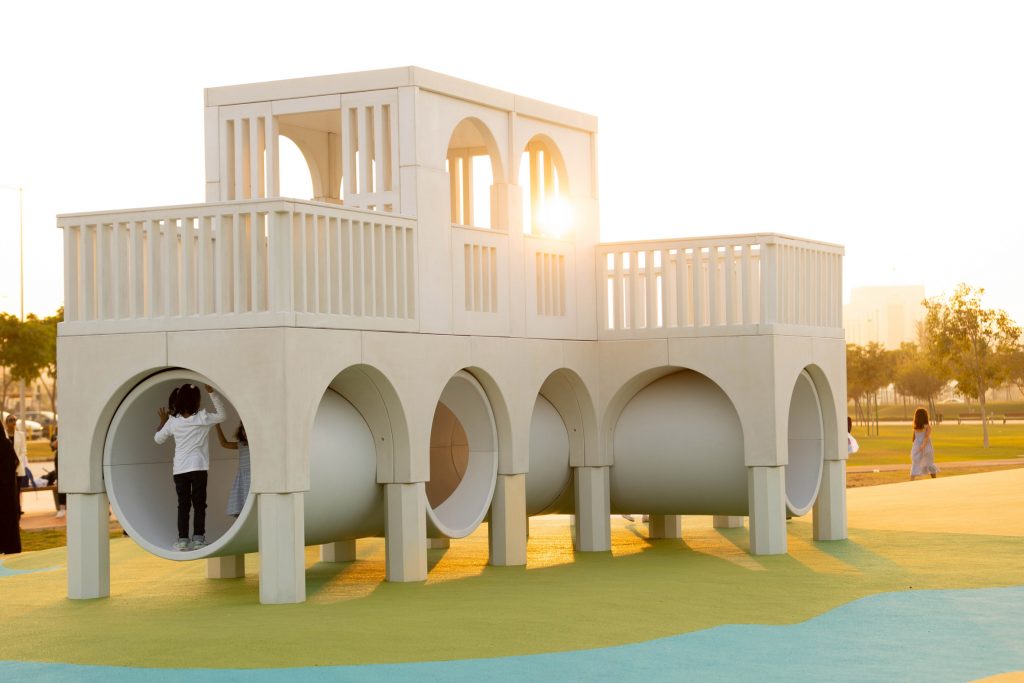
Doha Modern Playground by Shezad Dawood
Although intending to keep the four play objects as close as possible to the methodology and surface textures of the original buildings they reference, the artist has made certain changes to the designs of the iconic buildings to make them more suitable for a playground. While the colonnades of National Theatre has been transformed here into tunnels for children to crawl through, the striking mashrabiyas of Qatar University became lamps that lit up at night, with an outer curving climbing wall. All objects were manufactured using stainless-steel subframes and glass-reinforced concrete (GRC).
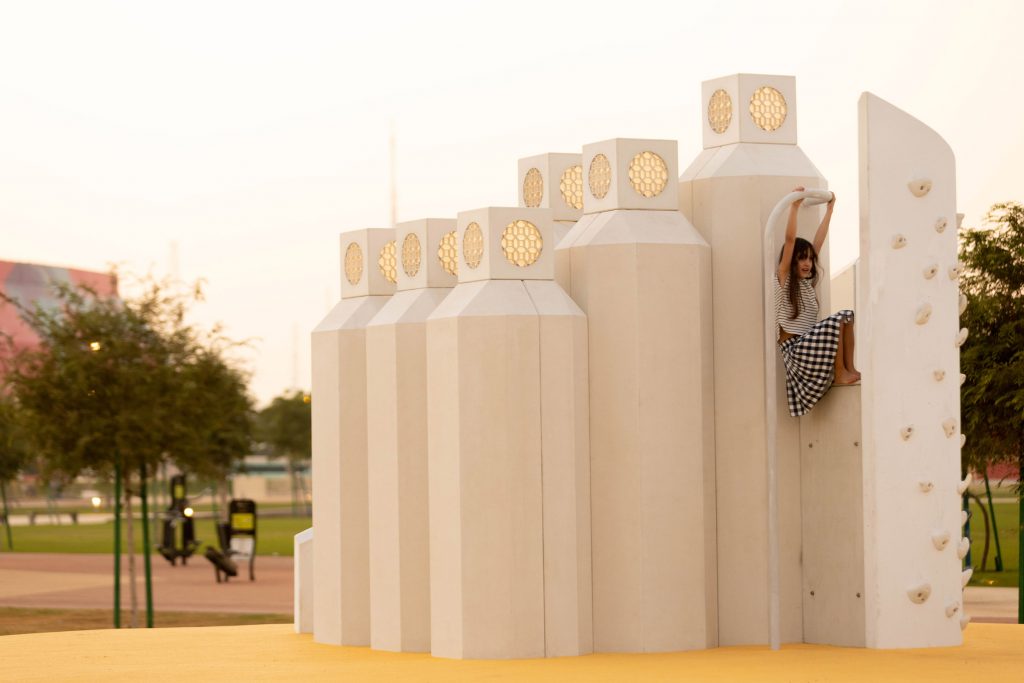
Doha Modern Playground by Shezad Dawood
Some of the playground’s miniature buildings can be directly compared to their real-life counterparts, specifically the National Theatre and the Qatar Post Office, which lie immediately to the north and south of the playground itself, as well as the Sheraton – a short distance away to the north.
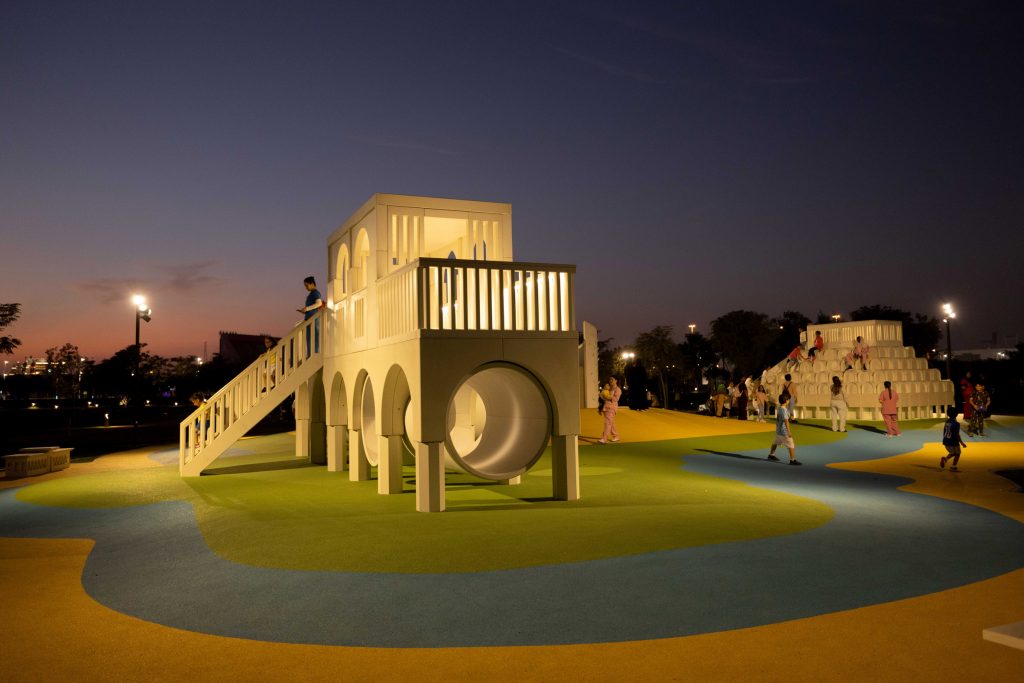
Doha Modern Playground by Shezad Dawood
“I wanted kids to be able to imagine the playground as a miniature city designed especially for them – and this extended to the benches, the topography and the choice of colours for the rubber matting, which I used to echo the layers of sand, sea, and greenery that already frame the environment in Doha,” Dawood explained.